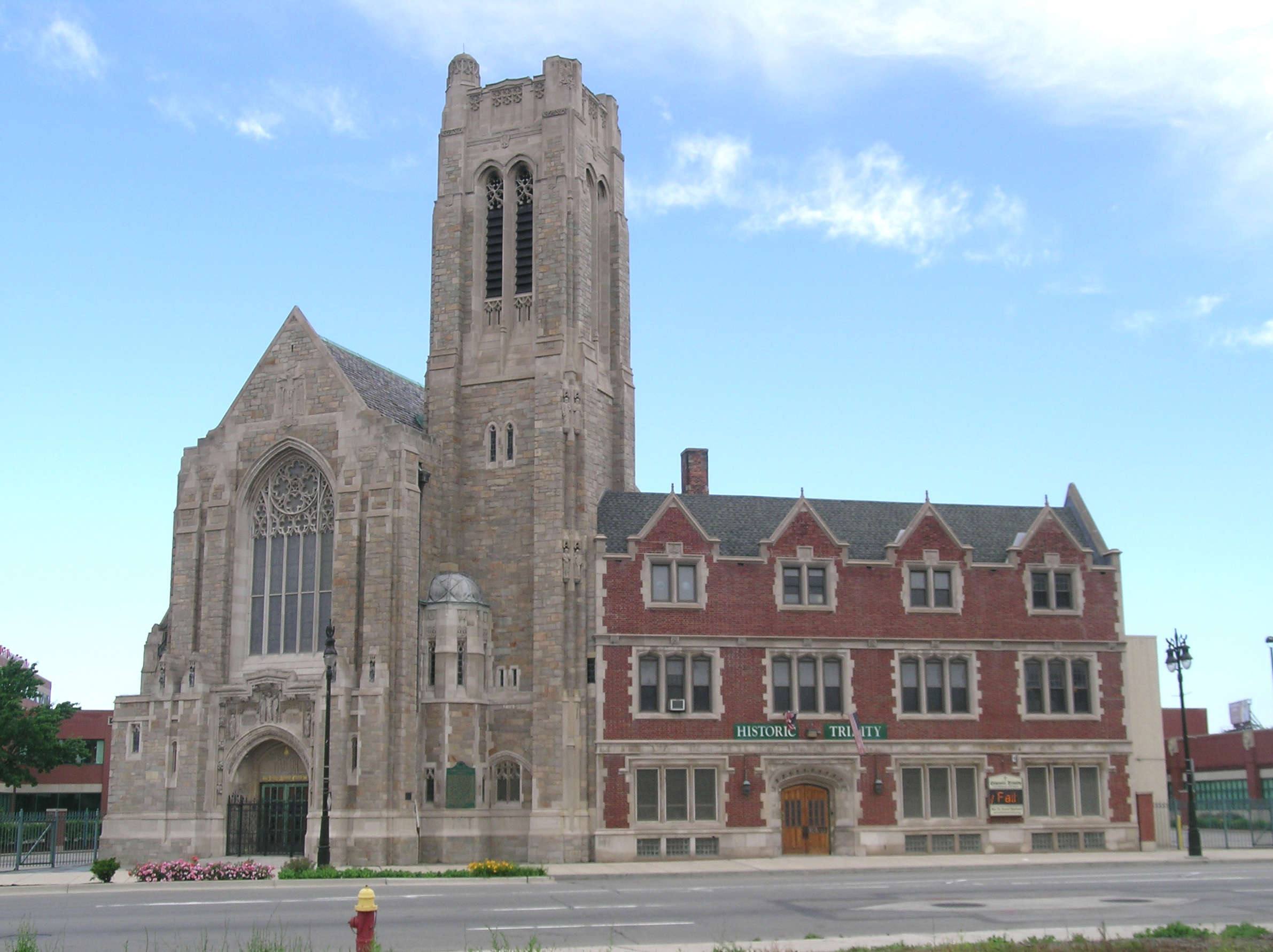- Historic Trinity Lutheran Church
Infobox_nrhp | name =Trinity Evangelical Lutheran Church Complex
nrhp_type =

caption = Trinity Evangelical Lutheran Church
location=Detroit, Michigan
lat_degrees = 42
lat_minutes = 20
lat_seconds = 34
lat_direction = N
long_degrees = 83
long_minutes = 2
long_seconds = 23
long_direction = W
locmapin = Michigan
area =
built =1927
architect= Bernard C. Wetzel, W. E. N. Hunter
architecture= Other
added =February 10 ,1983
governing_body = Private
refnum=83000897cite web|url=http://www.nr.nps.gov/|title=National Register Information System|date=2008-04-15|work=National Register of Historic Places|publisher=National Park Service]The Historic Trinity Lutheran Church is a church located in downtown Detroit,
Michigan . It occupies the Trinity Evangelical Lutheran Church complex, located at 1345 Gratiot Avenue.History
The Trinity congregation was formed in 1850, when members of St. Matthew's Lutheran Church, a German-speaking congregation, broke away from the main body following the excommunication of another member. [http://www.historictrinity.org/trinhist.html History page] from the Historic Trinity Lutheran Church] Services were first held in the chapel of Christ Episcopal Church, located at the corner of Jefferson and Hastings. Soon, the congregation bought the chapel of the Western Seaman's Friend Society of Woodbridge Street, and moved it to Rivard and Larned. This building soon proved too small, the congregation built a new brick church at Gratiot and Rivard in 1866. This area, surrounding
Eastern Market , was at the time home to a large German population and a natural fit for Trinity.Around this time, many schools, missions, and other congregations were begun by Trinity throughout the region. In total, 132 Lutheran parishes in southeast Michigan can be traced to Trinity. In 1905, a new school and social hall were built near the church. However, the community around Trinity soon changed as families left the downtown area, and the flow of new German immigrants dried up. Trinity began offering English services in addition to the original German-language ones. [http://www.ci.detroit.mi.us/historic/districts/trinity_lutheran.pdf Trinity Lutheran Chruch Historic District] from the city of Detroit]
In the late 1920s, Trinity began considering renovation of their 1866 structure. However, congregant Charles Gauss stepped forward and offered to finance the building of a new church. The old church was demolished, and the cornerstone of the new church, which is the current home of the congregation, was laid in 1929. The church was dedicated on February 15th, 1931.
After
World War II , the population in downtown Detroit began moving in droves to the suburbs, and many Detroit churches, including Trinity, lost membership. However, then-pastor Gilbert Theodore Otte remained firm in keeping the church in the downtown area. The 1931 church structure was historically recognized by the city of Detroit in 1979, [http://www.historictrinity.org/timeline.html Timeline] from Historic Trinity Lutheran Church ] by the state of Michigan in 1982, and was placed on theNational Register of Historic Places in 1983.Membership, however, declined, with only 112 church members in 1981. Additional programs were instituted, and membership more than tripled in five years. The church continues to be a gathering place for Detroit Lutherans, with over 1600 members in 2003. Today the parish operates under the Historic Trinity name within the umbrella of the
Lutheran Church - Missouri Synod . [http://www.historictrinity.org Main page] from the Historic Trinity Lutheran Church]External links
* [http://www.historictrinity.org/ Historic Trinity Lutheran Church parish website]
References
Wikimedia Foundation. 2010.
